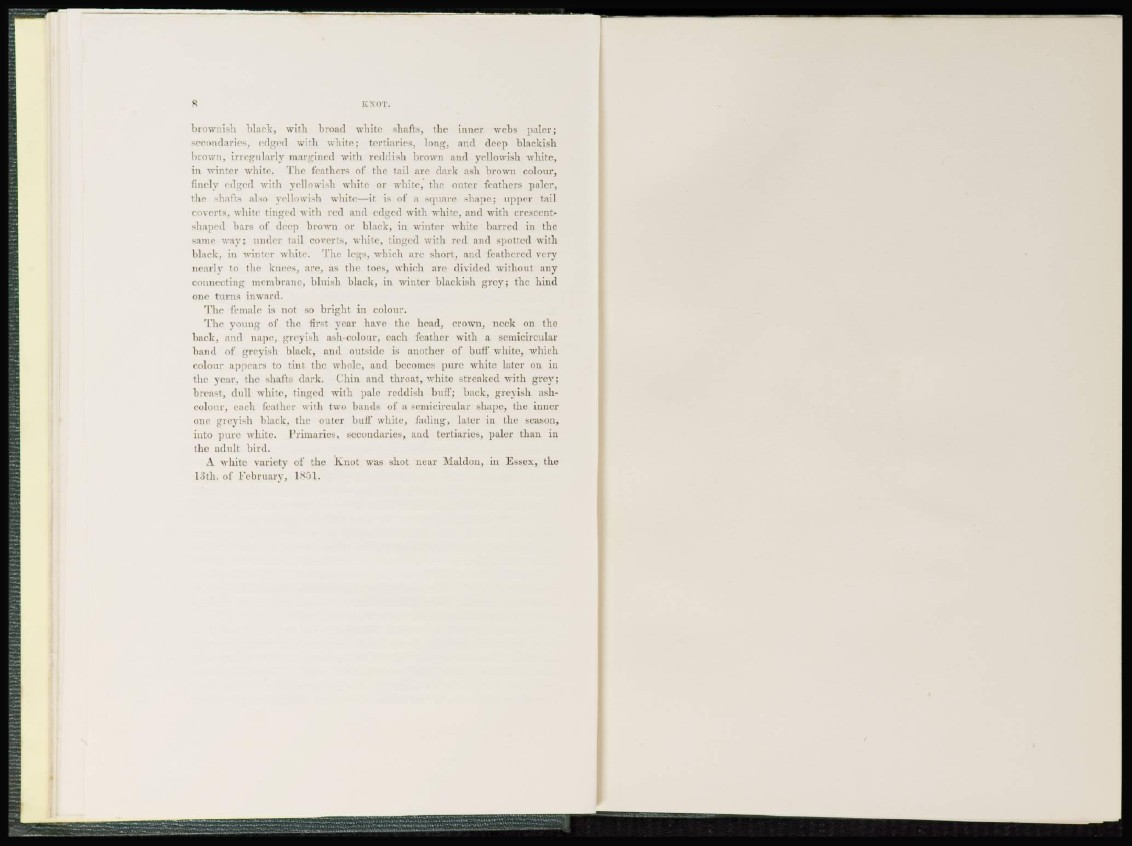
ft KNOT.
brownish hi a r k , with broad white shafts, the inner webs paler;
secondaries, edged with white; tertiaries, long, and deep blackish
brown, i r r e g u l a r l y margined with reddish brown and yellowish white,
in winter white. The feathers of the tail arc dark ash brown colour,
finely edged with yellowish whirr or white, the outer feathers paler,
the hafts also yellowish white—it is of a square shape; upper tail
coverts, white tinged with red and edged with white, and with crescentshaped
bars of deep brown or black, in winter white barred in the
same way; under tail coverts, white, tinged with red and spotted with
black, in winter white. The legs, which are short, and feathered very
n e a r l y to the knees, are, as the toes, which are divided without any
connecting membrane, bluish black, in winter blackish grey; the hind
one turns inward.
The female is not so b r i g h t in colour.
The young of the first year have the head, crown, neck on the
back, and nape, greyish ash-colour, each feather with a semicircular
b a n d of greyish black, and outside is another of buff white, which
colour appears to tint the whole, and becomes pure white later on in
t h e year, the shafts dark. Chin and throat, white streaked with grey;
breast, dull white, tinged with pale reddish buff; back, greyish ashcolour,
each feather with two bands of a semicircular shape, the inner
one greyish black, the outer bull" white, fading, later in the season,
i n to pure white. Primaries, secondaries, and tertiaries, paler than in
t h e adult bird.
A white variety of the Knot was shot near Maldon, in Essex, the
13th. of February, 1851.